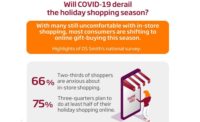You come home to find a new Amazon package at the door. What typically follows next is you open the corrugated box, push aside whatever protective packaging elements fill the box and grab your new product. The aftermath of this is a mix of recyclable corrugate containers, non-recyclable fillers and maybe some non-curbside recyclable plastic air pillows strewn across your floor. In the end, not everything ends up where it should, and there is a lot of waste involved. It’s a scenario that consumers are very familiar with, especially with the rise in online shopping.
It’s also a problem Amazon is well-aware of, and is seeking to rectify by pushing their vendors to use recyclable packaging materials certified under Amazon’s Frustration-Free Packaging program. As of August 1, vendors who have not enrolled their products that exceed 20 lbs. or 18” x 14” x 8” into Amazon’s Frustration-Free Packaging program will be charged $1.99/unit received. Vendors who receive their certification before the deadline get a credit from Amazon of $1 per newly certified and received unit.
This push has been a long time coming. Amazon’s guidelines, along with its financial penalties and rewards, reflect changing customer demands for sustainable, easy-to-open packaging. Because of customer demand, and the nature of Amazon’s standard-setting, all e-commerce vendors can benefit from following best practices for sustainable and protection packaging. Here are a few of those best practices:
Best Practice #1: Evaluate the Channel in Which the Package Will Be Used
Today, brands are challenged with creating packaging for different retail channels: in-store shopping and online/e-commerce shopping. An all-purpose package is most vendors’ dream solution with just one package design used for every possible retail channel, the product could be sold and distributed through. But, by evaluating the end-user experience, you’ll find that this is not going to be the most effective solution. Consider this: a package for a physical store location is responsible for the selling/marketing of the product, so graphics are very important. Considerations for shelf space are also taken into account while designing the package to maximize that space and capture the attention of a customer from a crowded shelf.
With e-commerce packaging, you are working toward a different end-user experience. Put yourself in the shoes of the customer: the display aspect isn’t as important to you at this point because you’ve already purchased the product; it’s already grabbed your attention online. Developing an all-purpose package will be difficult, so when chasing that dream, keep in mind this great opportunity that exists to redesign and reduce the total amount of packaging used in e-commerce shipping.
Best Practice #2: Understand That Less Can Be More
More packaging = more product protection = happier customer, right? The answer is, not really. More packaging to deal with when the customer is just trying to get to the product can actually mean more frustration.
To comply with Amazon’s Frustration-Free Packaging program, products should be shippable in their own packaging without the need for additional Amazon packaging. This means that, whenever possible, you should be looking for ways to reduce packaging that isn’t necessary. A good spot to do this is with durable products that can support the integrity of the package. Flexible and fragile products don’t offer this same opportunity, so take advantage of the built-in support of solid, durable products.
Also, consider whether the product will ship directly to the customer’s front porch, a retail floor or a dealer floor for them to pick-up. This impacts all the decisions you’ll make about the minimum amount of packaging needed to reach a certain level of protection.
Best Practice #3: Don’t Make Recycling Difficult for the Consumer
There are a surprising number of things, like plastic bags, that are recyclable but are NOT recyclable in curbside recycling. Those plastic air pillows that protect a product during shipping are recyclable, but can’t be put in your curbside recycling bin along with the corrugate box. They are only recyclable through plastic bag drop-offs, usually at grocery and department stores.
Part of Amazon’s Frustration-Free Packaging requirements is that the package is 100 percent curbside recyclable. So that means no plastic air pillows. There are many other options out there that do meet this criterion, including molded pulp and paperboard.
Best Practice #4: Take Advantage of Amazon Packaging Support and Supplier Network
The good news for vendors getting into Amazon’s Frustration-Free Packaging program is that Amazon has created a network of suppliers who can help. The Amazon Packaging Support and Supplier Network (APASS) is a list of select companies that can help you choose the right packaging materials, offer a variety of design capabilities and help ensure the packages will ultimately pass the Amazon’s Frustration-Free Packaging Programs certification test.
Vendors, sellers and manufacturers can use these companies as resources for the testing, designing and supplying of their packaging. With priorities for packaging changing, it can be helpful to have an expert to assist along the way. Now’s really the time for all e-commerce vendors to reevaluate their package priorities, and follow Amazon’s lead in giving customers the sustainable packaging that they want.



